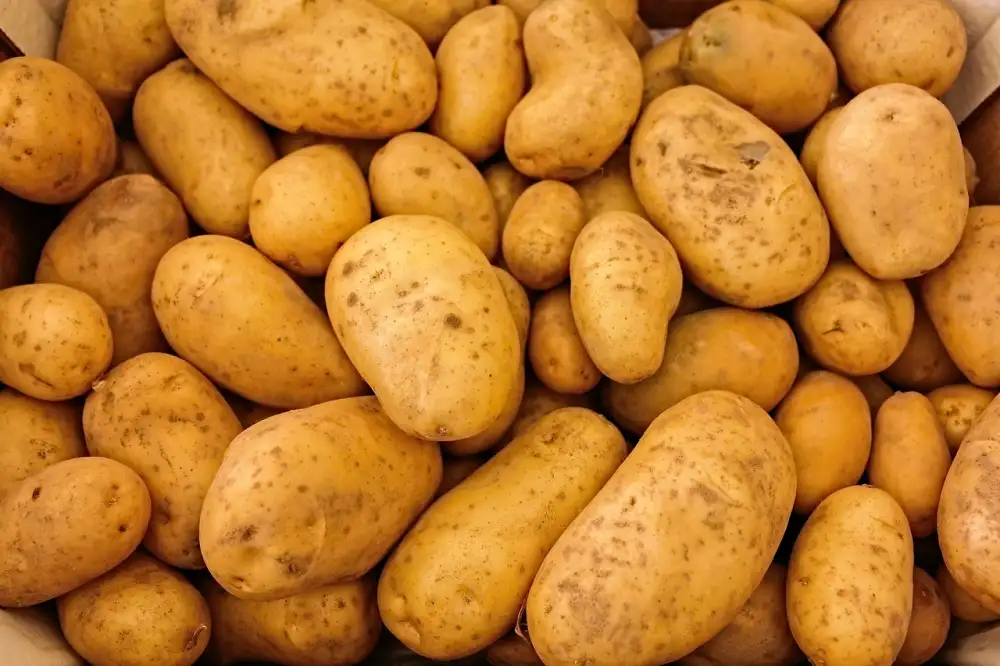Potatoes with Sprouts: Are They Safe to Eat? Unveiling the Truth About Sprouted Spuds

Potatoes are a staple in many cuisines around the world, loved for their versatility and delicious taste. However, when potatoes start sprouting, it often raises concerns about their safety for consumption. In this article, we will delve into the topic of eating potatoes with sprouts and uncover the truth behind their safety. By understanding the nature of sprouted potatoes and identifying potential risks, we can make informed choices about including them in our culinary adventures. So let's dive in and separate fact from fiction when it comes to sprouted spuds!
Understanding the Nature of Sprouted Potatoes
Sprouted potatoes occur when the tubers begin to grow shoots, also known as sprouts. This natural process is a result of the potato's attempt to reproduce and grow new plants. The sprouts emerge from the "eyes" or small indentations on the surface of the potato.
During sprouting, changes occur within the potato. The starches in the tuber are converted into sugars, which provide energy for the growing sprout. As a result, sprouted potatoes may taste sweeter than their non-sprouted counterparts.
It is important to note that while sprouting is a natural occurrence, it does indicate that the potato is aging and undergoing physiological changes. These changes can affect both its taste and nutritional composition.
Now that we have a basic understanding of what happens when potatoes sprout, let's delve into some potential risks associated with consuming them.
Potential Risks Associated with Consuming Sprouted Potatoes
While potatoes are a staple in many diets, consuming sprouted potatoes can pose potential risks. When potatoes sprout, they undergo chemical changes that can affect their nutritional content and taste. One of the main concerns is the presence of solanine, a toxic compound that naturally occurs in potatoes. As the potato sprouts, the solanine levels increase, making it unsafe for consumption in large quantities.
Consuming high levels of solanine can lead to various symptoms such as nausea, vomiting, diarrhea, and even neurological effects like headaches and confusion. In extreme cases, it can cause respiratory distress or even coma. Pregnant women and individuals with compromised immune systems are particularly vulnerable to these risks.
It is important to note that not all sprouted potatoes contain dangerous levels of solanine. The risk depends on factors such as the length of sprouting and storage conditions. However, it is always better to err on the side of caution when it comes to consuming sprouted potatoes.
To minimize the potential risks associated with eating sprouted potatoes, it is advisable to remove any visible sprouts or green patches before cooking or consuming them. These areas tend to have higher concentrations of solanine. Additionally, boiling or baking the potatoes at high temperatures can help reduce solanine levels further.
By being aware of the potential risks and taking necessary precautions, individuals can make informed choices about whether or not to consume sprouted potatoes. It is crucial to prioritize food safety and ensure that our culinary adventures do not compromise our well-being.
The Importance of Proper Storage and Handling
Proper storage and handling of potatoes are crucial in ensuring their safety for consumption. When it comes to sprouted potatoes, it is essential to store them in a cool, dark, and well-ventilated area. Exposing potatoes to light can accelerate the sprouting process and increase the production of solanine, a toxic compound found in green or sprouted potatoes.
To prevent sprouting, store potatoes away from onions and other fruits, as they release ethylene gas that promotes sprouting. It is also important to check your potato supply regularly and remove any sprouted or damaged ones immediately.
When handling sprouted potatoes, always wear gloves as solanine can be absorbed through the skin. Avoid consuming any part of a potato that has turned green or has visible signs of decay. Cutting off the sprouts alone may not eliminate all traces of solanine; therefore, it is best to discard heavily sprouted potatoes altogether.
By following proper storage and handling practices, you can minimize the risks associated with consuming sprouted potatoes and ensure a safe culinary experience.
Identifying Safe and Unsafe Sprouted Potatoes
When it comes to sprouted potatoes, it's crucial to distinguish between safe and unsafe ones. Safe sprouted potatoes have small, firm sprouts that are less than 1 inch in length. These sprouts should be light green in color and have no signs of mold or decay.
On the other hand, unsafe sprouted potatoes exhibit larger, longer sprouts that are dark green or purple in color. They may also have a soft or mushy texture, indicating spoilage. Additionally, if you notice any black spots or a strong odor coming from the potato, it is best to discard it.
To ensure your safety, always examine your potatoes carefully before consuming them. Remember, it's better to be cautious and discard potentially unsafe sprouted potatoes rather than risk foodborne illnesses.
Tips for Safely Consuming Sprouted Potatoes
1. Trim the sprouts: If you decide to eat sprouted potatoes, it is essential to remove any green sprouts or buds. These contain solanine, a toxic compound that can cause nausea and digestive issues.
2. Cook thoroughly: Cooking sprouted potatoes at high temperatures can help reduce the levels of solanine. Boiling, baking, or frying them until they are fully cooked will ensure that any remaining toxins are destroyed.
3. Store properly: To prevent potatoes from sprouting prematurely, store them in a cool, dark place with good ventilation. Avoid storing them near onions or other fruits and vegetables that release ethylene gas, as this can accelerate sprouting.
4. Use fresh potatoes: Opt for fresh potatoes whenever possible. Older potatoes are more likely to have developed sprouts and higher levels of solanine.
5. Trust your senses: Before consuming a sprouted potato, inspect it carefully for signs of decay or mold. If it looks rotten or smells off, discard it immediately.
By following these tips, you can minimize the risks associated with consuming sprouted potatoes and enjoy them safely as part of your culinary repertoire.
In conclusion, it is important to make informed choices when it comes to eating potatoes with sprouts. While sprouted potatoes may not be harmful in small quantities, they do pose potential risks if consumed in large amounts or if the sprouts have turned green. It is crucial to understand the nature of sprouted potatoes and the potential toxins they may contain.
Proper storage and handling of potatoes are key to preventing sprouting and minimizing any risks associated with consumption. Storing them in a cool, dark place and avoiding exposure to light can help slow down the sprouting process. Additionally, regularly inspecting your potatoes for any signs of sprouting or decay is essential.
When identifying safe and unsafe sprouted potatoes, look for small, white or pinkish sprouts that are firm and intact. Avoid potatoes with long, green sprouts as they may indicate the presence of solanine, a toxic compound. Discard any potatoes that show signs of rotting or mold.
If you choose to consume sprouted potatoes, it is recommended to remove the sprouts and any green parts before cooking. Cooking at high temperatures can help break down some of the toxins present in the potato.
By understanding the risks associated with consuming sprouted potatoes and taking necessary precautions, you can enjoy this versatile vegetable safely. Remember to prioritize proper storage, regular inspection, and safe preparation methods when incorporating sprouted potatoes into your culinary adventures.
Published: 04. 12. 2023
Category: Food



